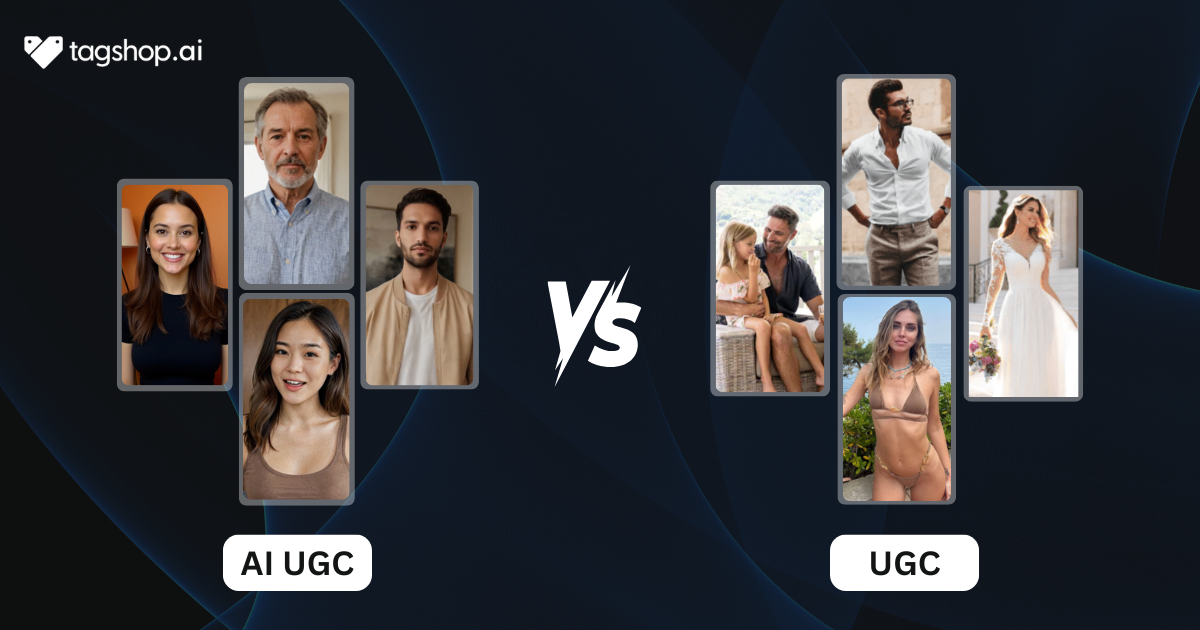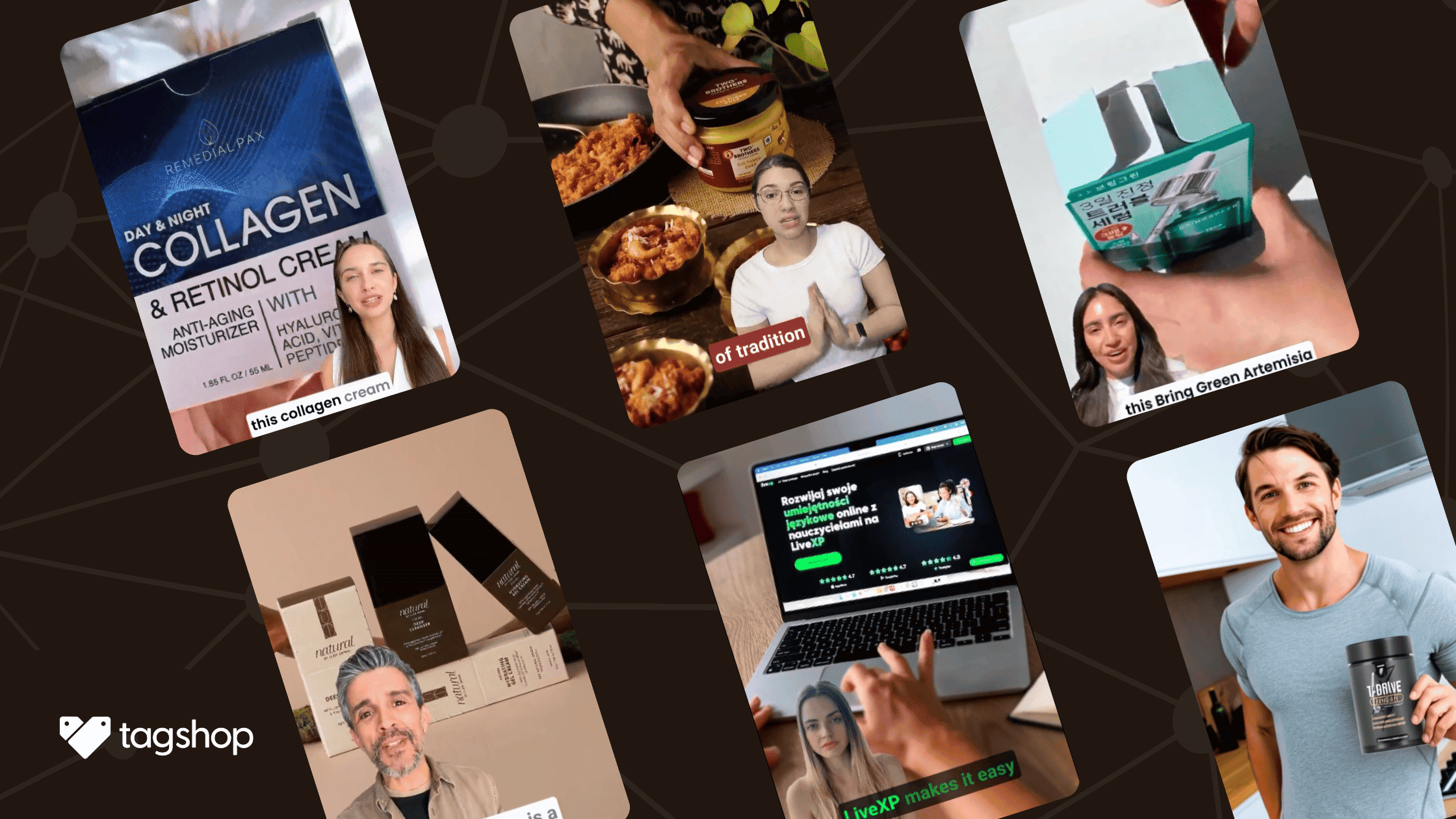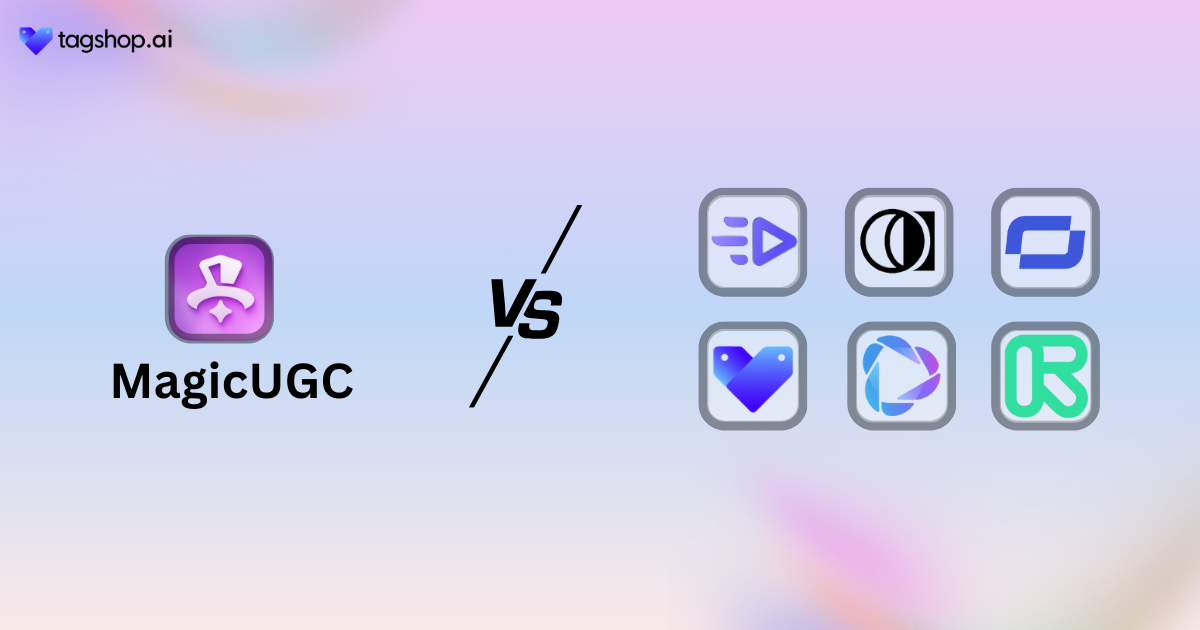AI UGC vs Traditional UGC: Which One Delivers Better ROI?
In the battle for attention, conversion, and ROI, you might have seen two types of content flooding social media these days. AI UGC and traditional UGC, one is powered by smart AI and the other by real humans. But which one delivers the best results?
Brands always seek new and smarter ways to grow their online presence, which is why it is important for them to understand what content will scale. In this blog, we’ve dived into the differences, comparisons, and everything you want to know regarding AI UGC vs the traditional one. Read below:
Defining the Two: AI UGC vs Traditional UGC
AI UGC refers to the user-generated content that is created by artificial intelligence. The AI has the power to mimic real humans who speak, talk, and sell like them. Additionally, Tools like an AI UGC generator leverage these powerful capabilities, which also include AI scriptwriting, AI editing, URL to video creation, generating hyper-realistic AI avatars, and more.
This enables brands to stay consistent, scale their content for running ad campaigns, and save their production costs at a greater level.
Traditional UGC is made by the real humans, users, and creators who are not so branded and focus on authenticity. This includes social media posts, reviews, testimonials, honest reviews by creators, and more.
It helps in building trust and credibility in the eyes of the customer, but often comes with high production costs and shoot delays. The process is slower and harder to scale as it requires planning, creating content, shooting, editing, scriptwriting, and more.
Comparing ROI Factors Side-by-Side
Here is the detailed comparison of the ROI factors of traditional vs AI UGC:
A. Cost
- Traditional: Traditional UGC requires a much higher cost, which can range from $100 to $10,000 per post. It might seem that no cost is required to get reviews, but the actual user reviews are not on branded and require revision. So, brands hire creators and influencers for the content, who charge a lot of money for the same. Additionally, they delay shoots, re-shoots, editing, scriptwriting, and more, which requires a team that charges high fees.
- AI UGC: When it comes to AI UGC, you cut a lot of costs that you are giving to the production team and creators. This is because the AI UGC generator tools have built-in AI features for scriptwriting, editing, URL to video generation, and more. All these features are included in a plan that is much lower than the traditional UGC video creation process. It can start with $23 per month and creates UGC videos in just a few minutes, allowing you to scale more and reach a broader audience.
B. Time to Produce
- Traditional: Traditional UGC takes days and weeks to plan, create, and produce content. They are limited by human capacity and need a big production team, such as editors, scriptwriters, creators, and more, to produce content.
- AI UGC: AI UGC content creation automates most of your production team tasks so that you can produce consistent content in less time. These AI-powered tools can produce bulk content in multiple languages so that you can reach a global audience without needing to wait long.
C. Scalability
- Traditional: Traditional UGC relies heavily on human power and thus scaling content is slower and much difficult. This limits the content creation process, which makes your brand inconsistent.
- AI UGC: When it comes to scalability, AI UGC is the hero. You can test as many ad creatives as possible by creating bulk content. With AI UGC, you can scale high-performing content ideas, generating multiple variants of content in different formats.
D. Performance
- Traditional: When it comes to performance, traditional UGC performs better when the ads are of high quality. It requires high precision on targeting, researching, and ad optimization.
- AI UGC: AI UGC tools have campaign management capabilities, which make it easier to optimize ads for better performance.
E. Brand Control & Consistency
- Traditional: Traditional UGC gives brand control when brands collaborate with influencers and creators. But real users and customers have no brand control, which makes it difficult for brands to collect and share content.
- AI UGC: AI UGC content gives full customization and brand control options, allowing you to set tone, voiceovers, colors, fonts, and more. This helps users relate the content to your brand and make it more relatable.

When Traditional UGC Wins?
If you are a brand looking to scale with traditional UGC, here’s when traditional UGC wins:
1. Emotional Storytelling
Traditional UGC naturally delivers a compelling emotional story to the viewers because it is generated from actual users. When users see other people talking about your brand, giving genuine feedback and reviews, they trust more and end up purchasing.
This sparks a strong emotional connection and builds more engagement. Highlight real-life experiences, struggles, and how your product benefits them that evoke emotional responses and drive conversions.
2. Real Human Connection
UGC is on demand because ‘people trust people’. There are still some niche that requires authentic UGC and not branded content. This builds real human connection, instant credibility, and trust. This real human connection is so important for shaping online conversations and building a loyal community.
3. Authenticity
UGC is built upon the foundation of authenticity. Honest people respect and love the raw, unpolished, and real opinions of others. Hence, when authenticity matters more than branded and polished content, then traditional UGC wins.
When AI UGC Wins?
Here’s when AI UGC steals the spotlight:
1. Running Performance Campaigns
AI UGC helps in optimizing and running smooth ad campaigns by analyzing audience behaviour. The AI UGC tools have the capabilities to track the behaviours of the consumers and recommend targeting. It accelerates the campaign performance, enabling brands to test, optimize, and generate high volumes of content. Many big brands like Dunkin’Donuts have boosted their app downloads by 57% with AI-driven local campaigns.
2. Multilingual Support
AI UGC has the power to translate the content into multiple languages with its smart feature. This eliminates the need to produce and shoot content in diverse languages, leading to time and budget management. This extends your global brand reach and maintains the content diversity, no matter what the language is.
3. Limited Budget
AI UGC eliminates the need for a production team by providing features such as AI scriptwriter, editor, URL to video generation, bulk content creation, and much more. Rather than paying dollars to a single creator, you just need to pay for the tool monthly and get all the features within a limited budget. You don’t need to hire anyone to scale your content, and the money you save, you can easily spend on your ad campaigns.
4. A/B Testing Creatives for Ads
AI UGC level up your A/B testing by providing a range of content scripts, variety, content formats, visuals, and more in just a few minutes. This instant creative generation makes it easy for brands to test their ad campaigns and understand which content best resonates with their target audience.

Case Studies or Hypothetical ROI Comparison
- AI UGC campaign: 10x videos, lower CPC, higher ROAS
- Traditional UGC: 2x videos, higher engagement rate, but limited scale
- Summary of ROI impact across different campaign types
Combining Both: A Hybrid Strategy
The best brands in 2026 aren’t the ones choosing between traditional and AI UGC, but are combining both methods strategically to get scalable results. The AI-generated videos are complemented with real user testimonials so that customers can trust them.
You can even automate your captions and hashtags using smart AI tools, with real photos and videos to get engagement and interaction. This hybrid approach not only saves your time but also gives you quality results that bring in conversions. You can create bulk content with the real customer reviews and build a genuine connection with your customers.
Final Verdict: Which One Delivers Better ROI?
| Features | AI UGC | Traditioanal UGC |
| Scalability | Excellent – Create bulk content in less time. | Limited – depends on customer reviews and participation. |
| Performance Testing | Easy A/B testing and optimization | Limited – takes time due to manual editing and user submissions |
| Authenticity | Moderate – can mimic humans and connect, but often lacks genuine human participation. | Highly authentic |
| Trust Building | Trust may be lower among builders, but they can easily connect with them. | Build strong trust and genuine connections. |
| Storytelling | Can be scripted for compelling narratives | Rich and diverse storytelling |
| Brand Personalization | High brand personalization | Limited, depending on users’ feedback. |
Which one is better?
After researching and understanding both types, it is pretty obvious that there is no one type better than the other. You have to use a hybrid approach to make your brand stand out. While AI UGC delivers the scalability, performance, and brand personalization with better ROI and results, traditional UGC delivers the credibility that customers crave for.

Conclusion
It’s clear from above that the UGC cannot be ignored, and brands must recognize the importance of a hybrid approach. All thanks to AI, as with it, you can create content much faster. Make sure you align all the plans as per your brand goals and objectives to get the full benefit of AI UGC.
By combining the authenticity of UGC with the scalability, flexibility, and cost effectiveness of AI UGC, brands can supercharge their content creation game like never before. If you are looking for a tool to get started with AI UGC, we recommend using Tagshop, as it delivers the desired results.
Get started today and scale your content with the power of AI.








